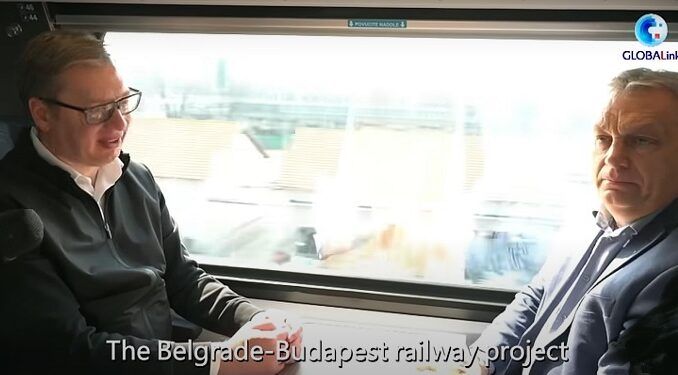
First trilateral transport infrastructure project between China and Central & Eastern European Countries (CEEC).
It is reported that Serbia will complete the construction of the more than 180-kilometre Belgrade-Subotica railway section by the end of 2024. As of April 2024 construction of the Serbian Novi Sad-Subotica section was 80% complete.
Daily News Hungary also reports that the construction of the Hungarian section of the Budapest-Belgrade railway is expected to be completed by the end of 2025 or February-March 2026.
The Belgrade-Novi Sad section of the 350-km Belgrade-Budapest railway was inaugurated by the Serbian President and Hungarian Prime Minister two years ago in Serbia’s Novi Sad. Once finished, trains will run at a speed up to 200 km/h between Belgrade and Budapest, bringing the Balkans closer to central Europe.
Serbia was among the first supporters of the Belt and Road Initiative. A large number of projects, including the Hungary-Serbia Railway and the Zemun-Borca Bridge, have been constructed.
This is the first trilateral cooperation project between China and the Central and Eastern European Countries (CEEC) concerning transport infrastructure which has entered the implementation process.
The CEEC Project is of exceptional strategic relevance in view of the fact that it is a part of the main transversal railway of the Republic of Serbia and that it directly connects three of the five largest cities in Serbia. This section also makes up almost half of the length of the Pan-European Corridor Xb and is a part of the Trans-European Transport Network (TEN-T) in the territory of the Republic of Serbia.
It is an important segment of the southern arm of the 21st century Maritime Silk Road, which connects China’s container port in Piraeus and ports of the Far East with South-Eastern European, Central European and Eastern European countries.

Cooperation between China and Central and Eastern Europe promotes business and investment cooperation between China and countries of Central and Eastern Europe: including Albania, Bosnia and Herzegovina, Bulgaria, Croatia, the Czech Republic, Greece, Hungary, Montenegro, North Macedonia, Poland, Romania, Serbia, Slovakia, and Slovenia.
The China-CEEC cooperation initiative (or the 16 + 1 platform) was proposed by China and was launched as a cross-regional cooperation platform in April 2012 in Budapest, Hungary. The initiative was widely welcomed by Central and Eastern European Countries along with South-Western Europe in the Balkans.
The eighth meeting of China and CEEC Business Council was held in Ningbo, China in March 2024. The CEEC sponsored a Clean Energy Expo China 2024 which was held in Beijing from Mar. 26 to 28, 2024 on the theme “Clean Energy Helps Build New Power System“, featuring exhibitions, forums, seminars and trade fairs.
Sources:
CGTN GLOBALink
- China Economic Net, Mar.26, 2024. https://en.ce.cn/Insight/202403/26/t20240326_38948571.shtml
- Journal of World Socio-political Studies, October 2021. ‘China-CEEC Cooperation and the EU Response’. https://doi.org/10.22059/wsps.2022.337619.1277
- Cooperation between China and Central and Eastern European Countries Secretariat. https://www.china-ceec.org/eng/
- Daily News Hungary, Feb 4, 2024 & May 4, 2024.
https://dailynewshungary.com/budapest-belgrade-railway-novi-sad-subotica/
https://dailynewshungary.com/budapest-belgrade-railway-schedule/